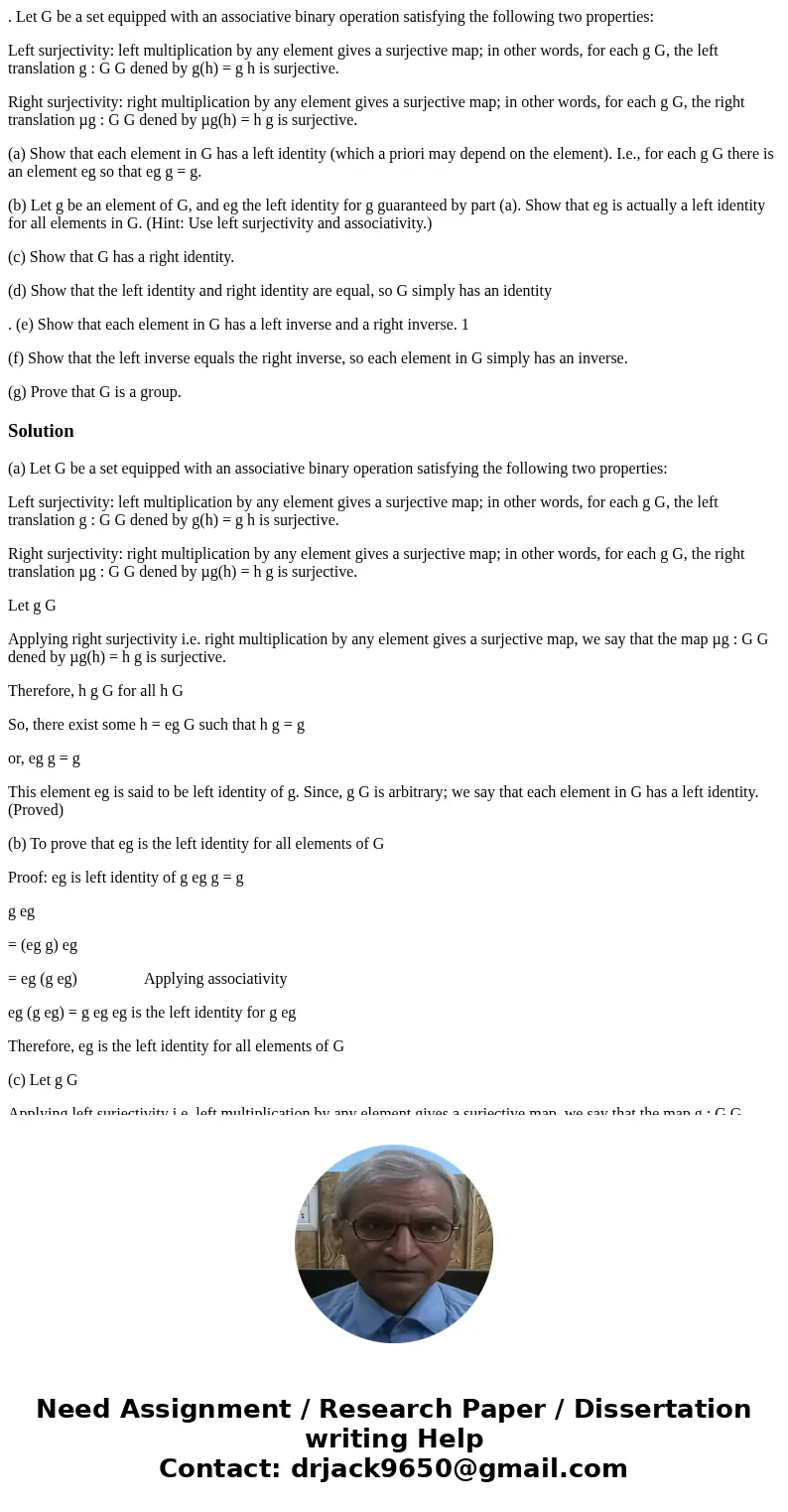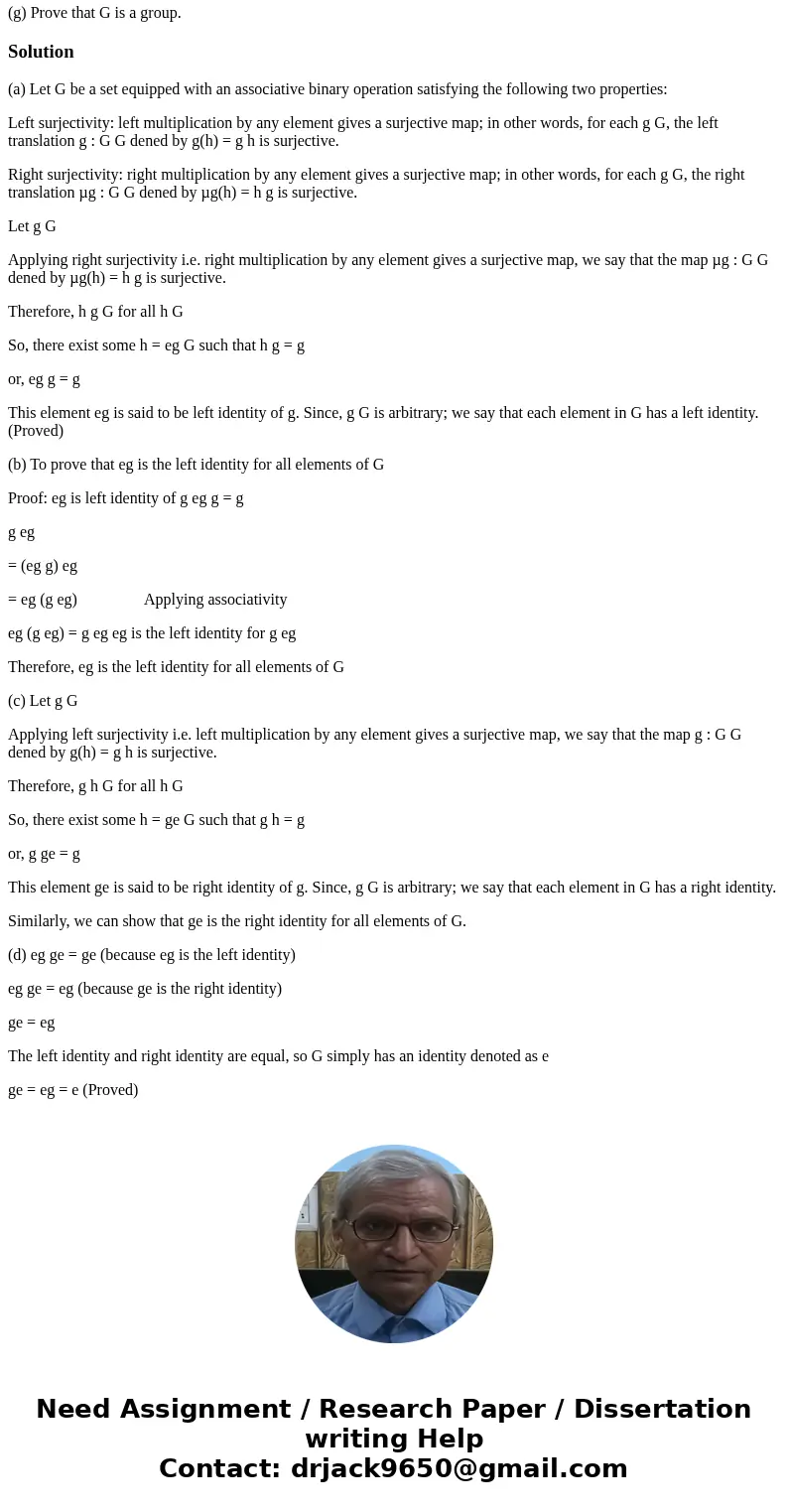Let G be a set equipped with an associative binary operatio
. Let G be a set equipped with an associative binary operation satisfying the following two properties:
Left surjectivity: left multiplication by any element gives a surjective map; in other words, for each g G, the left translation g : G G dened by g(h) = g h is surjective.
Right surjectivity: right multiplication by any element gives a surjective map; in other words, for each g G, the right translation µg : G G dened by µg(h) = h g is surjective.
(a) Show that each element in G has a left identity (which a priori may depend on the element). I.e., for each g G there is an element eg so that eg g = g.
(b) Let g be an element of G, and eg the left identity for g guaranteed by part (a). Show that eg is actually a left identity for all elements in G. (Hint: Use left surjectivity and associativity.)
(c) Show that G has a right identity.
(d) Show that the left identity and right identity are equal, so G simply has an identity
. (e) Show that each element in G has a left inverse and a right inverse. 1
(f) Show that the left inverse equals the right inverse, so each element in G simply has an inverse.
(g) Prove that G is a group.
Solution
(a) Let G be a set equipped with an associative binary operation satisfying the following two properties:
Left surjectivity: left multiplication by any element gives a surjective map; in other words, for each g G, the left translation g : G G dened by g(h) = g h is surjective.
Right surjectivity: right multiplication by any element gives a surjective map; in other words, for each g G, the right translation µg : G G dened by µg(h) = h g is surjective.
Let g G
Applying right surjectivity i.e. right multiplication by any element gives a surjective map, we say that the map µg : G G dened by µg(h) = h g is surjective.
Therefore, h g G for all h G
So, there exist some h = eg G such that h g = g
or, eg g = g
This element eg is said to be left identity of g. Since, g G is arbitrary; we say that each element in G has a left identity. (Proved)
(b) To prove that eg is the left identity for all elements of G
Proof: eg is left identity of g eg g = g
g eg
= (eg g) eg
= eg (g eg) Applying associativity
eg (g eg) = g eg eg is the left identity for g eg
Therefore, eg is the left identity for all elements of G
(c) Let g G
Applying left surjectivity i.e. left multiplication by any element gives a surjective map, we say that the map g : G G dened by g(h) = g h is surjective.
Therefore, g h G for all h G
So, there exist some h = ge G such that g h = g
or, g ge = g
This element ge is said to be right identity of g. Since, g G is arbitrary; we say that each element in G has a right identity.
Similarly, we can show that ge is the right identity for all elements of G.
(d) eg ge = ge (because eg is the left identity)
eg ge = eg (because ge is the right identity)
ge = eg
The left identity and right identity are equal, so G simply has an identity denoted as e
ge = eg = e (Proved)


 Homework Sourse
Homework Sourse